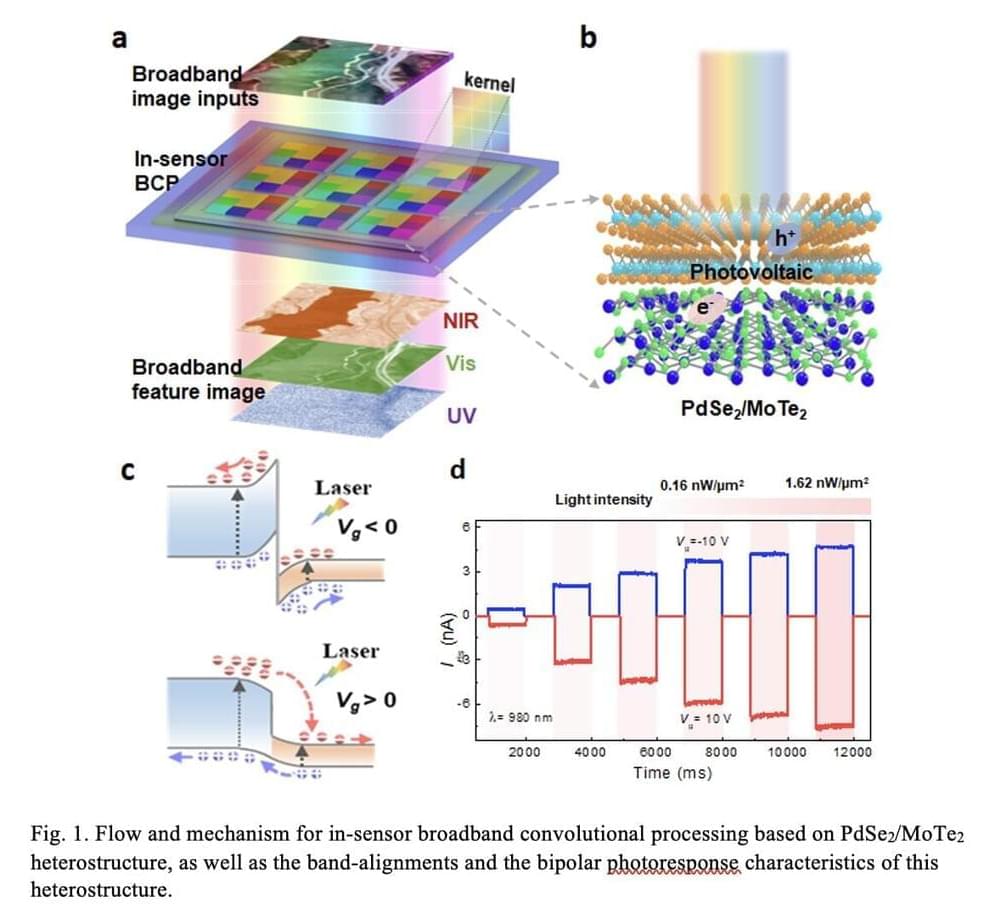Efficiently processing broadband signals using convolutional neural networks (CNNs) could enhance the performance of machine learning tools for a wide range of real-time applications, including image recognition, remote sensing and environmental monitoring. However, past studies suggest that performing broadband convolutional processing computations directly in sensors is challenging, particularly when using conventional complementary metal-oxide-semiconductor (CMOS) technology, which underpins the functioning of most existing transistors.
Researchers at Huazhong University of Science and Technology and Nanjing University have recently investigated the possibility of achieving the convolutional processing of broadband signals using an alternative platform, namely van der Waals heterostructures. Their paper, published in Nature Electronics, could ultimately inform the development of better performing image recognition algorithms.
“Our paper was inspired by some our previous research works,” Tianyou Zhai, Xing Zhou and Feng Miao, three of the researchers who carried out the study, told TechXplore. “In studies published in Advanced Materials and Advanced Functional Materials, we realized type-III and type-II band-alignments in different heterostructures. Furthermore, we published a paper in Science Advances, where we realized a reconfigurable neural network vision sensor based on WSe2.”










Comments are closed.